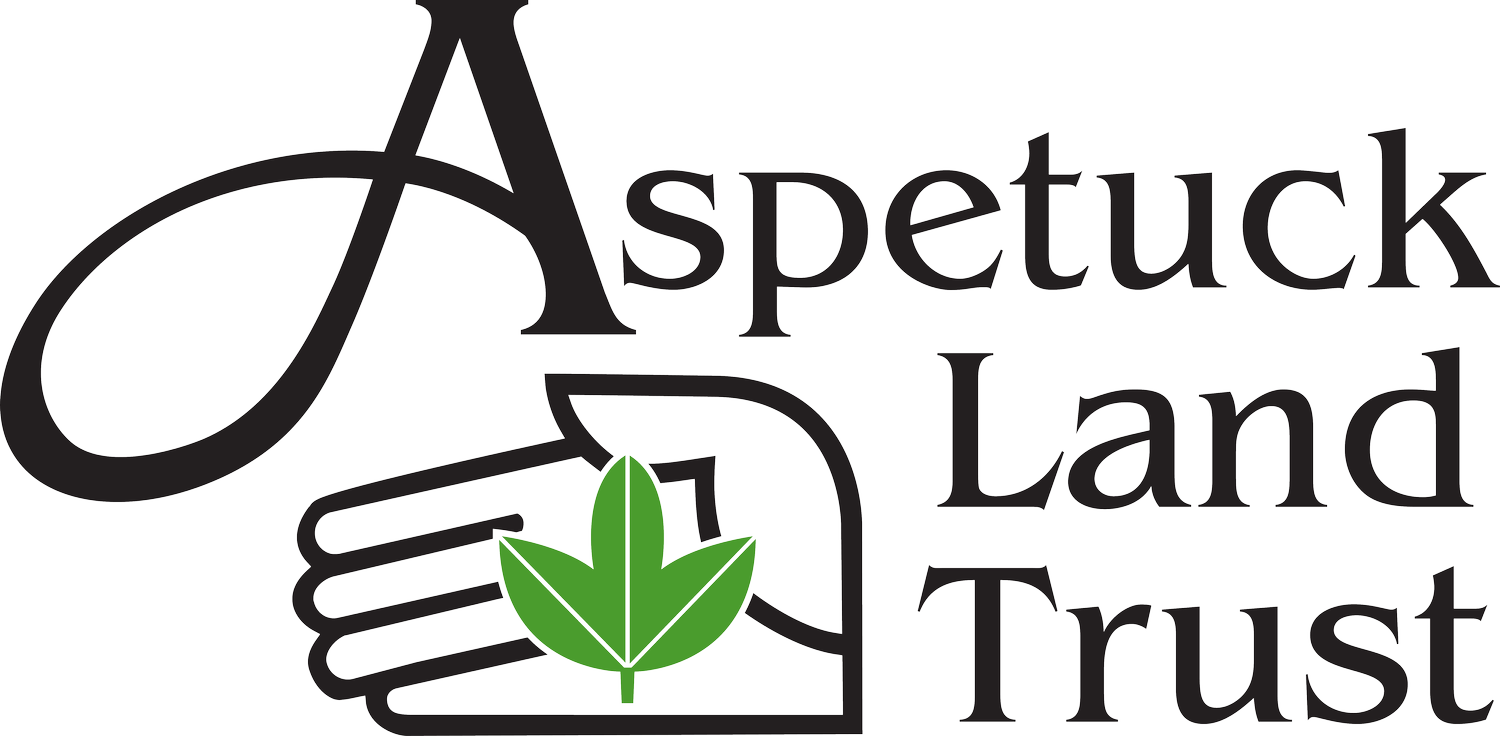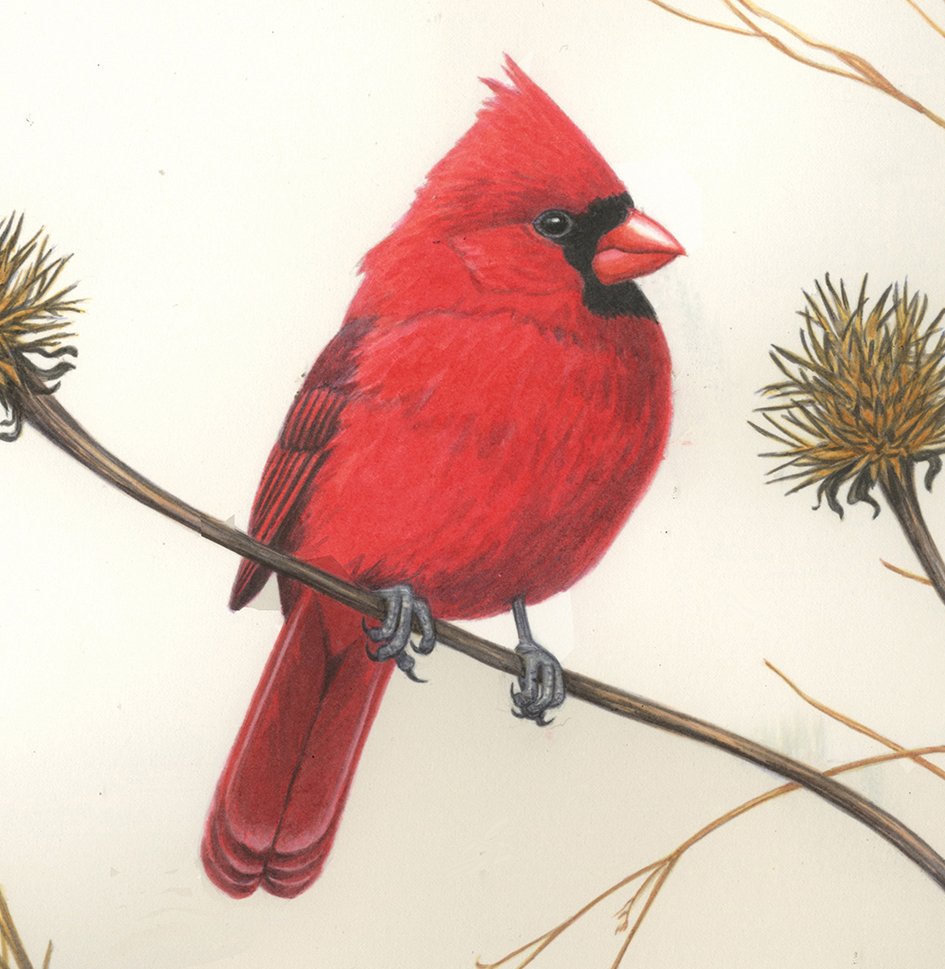
1. Northern Cardinal
Cardinalis cardinalis | The cardinal’s short beak is adapted to its diet of seeds, insects, and berries. While it’s common at home bird feeders, it visits woodland thickets to find a more varied food source.

2. Dark-eyed Junco
Junco hyemalis | On apps like Cornell University’s Merlin Bird ID, you can listen to the Junco’s metallic trilling song, used to defend territory or find a mate.
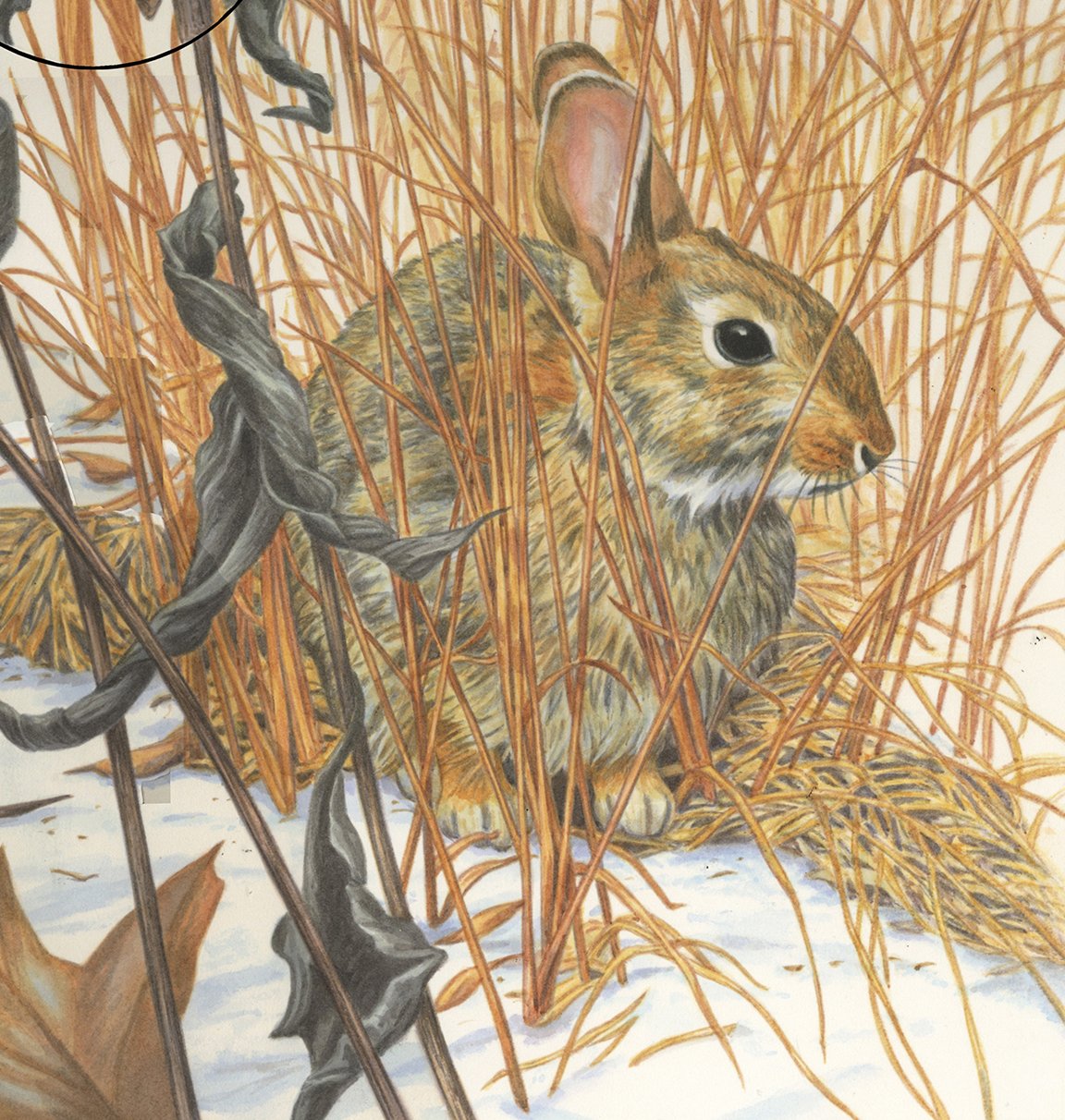
3. Eastern Cottontail
Sylvilagus floridanus | These plentiful rabbits feed on bark, twigs, and buds in the winter; they move between open spaces to escape predators and find vegetation.
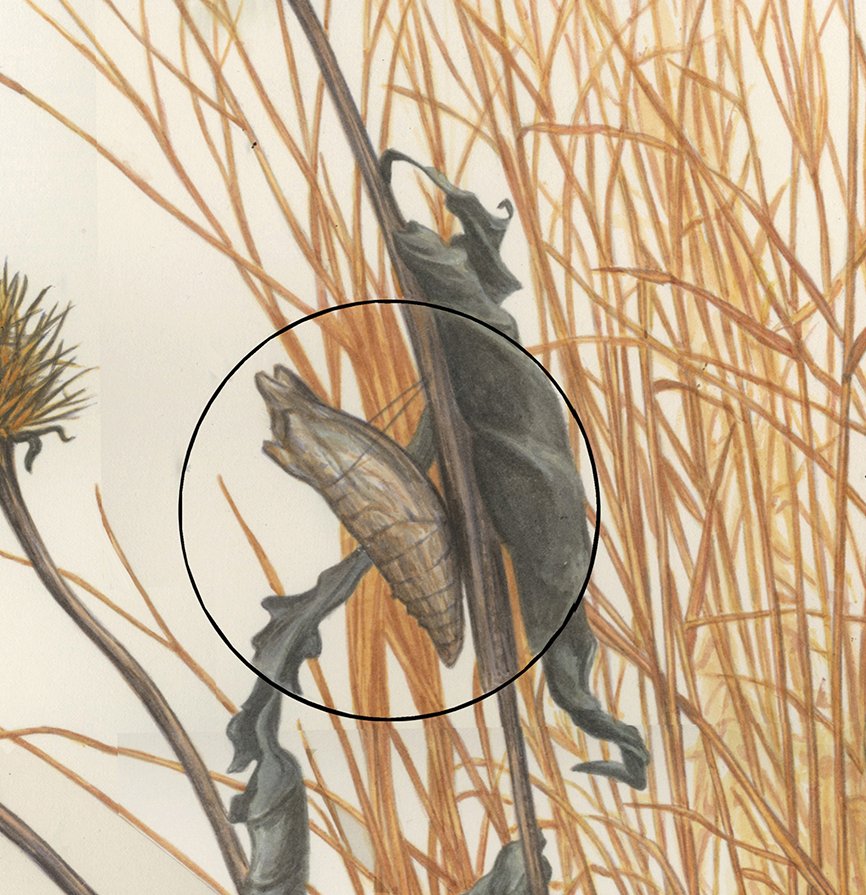
4. Black swallowtail butterfly chrysalis
Papilio polyxenes | When you “leave the leaves,” rather than discarding them after raking, and pile branches and plant stems in the garden, they can provide habitat for pollinators like the black swallowtail butterfly. Notice how the butterfly disguises its chrysalis as a dried leaf.

5. Purple Coneflower
Echinacea purpurea | A garden favorite in Aspetuck’s spring plant sales, Echinacea attracts butterflies and hummingbirds with its showy purple petals and ample nectar in the summer. But if you leave it standing in the winter, it becomes a source of seeds — aka nutrition — for overwintering birds.
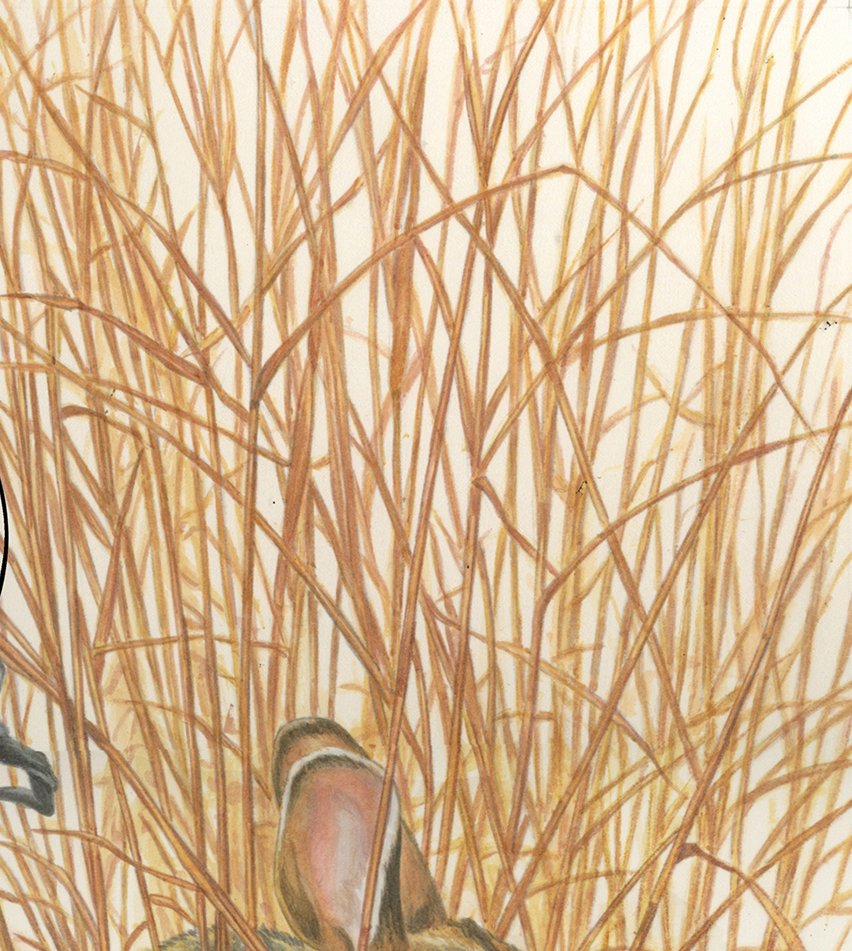
6. Little Bluestem
Schizachyrium scoparium | The fuzzy white seeds of little bluestem feed birds during winter, and it stays standing, while faded, through the snow. Little bluestem is suitable as a ground cover or as a garden accent (transitioning from blue-green grass to winter seedheads). It’s also the host plant for several species of skipper butterflies.
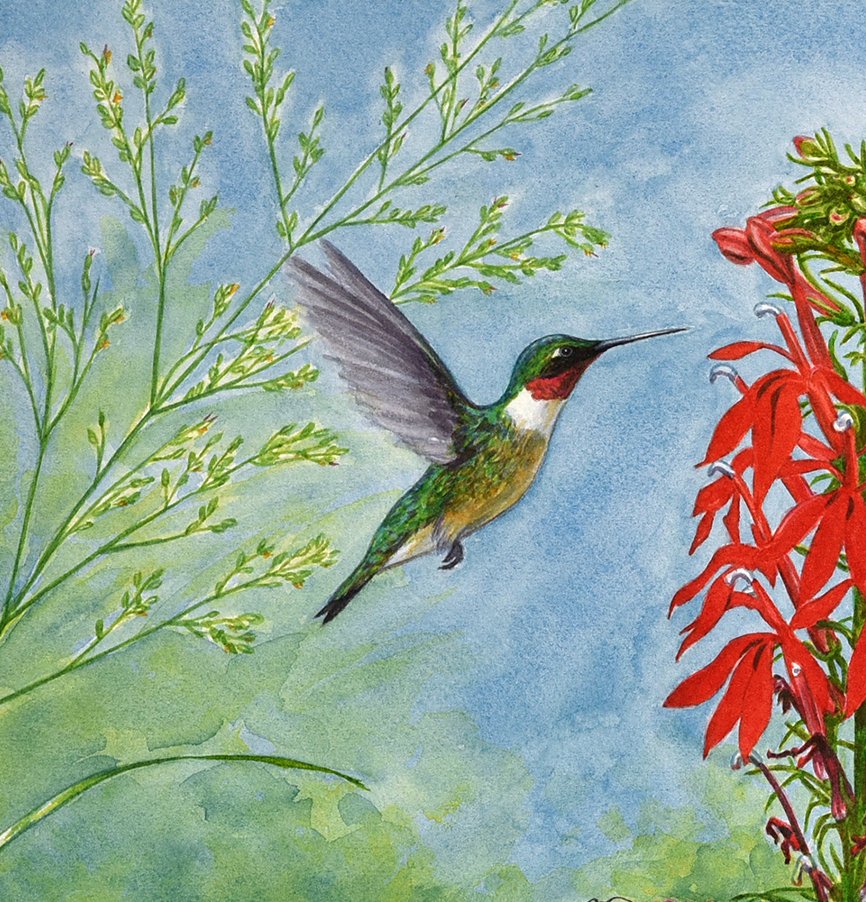
1. Ruby-throated hummingbird
Archilochus colubris | As hummingbirds hover beside tubular flowers, they beat their wings an impressive 50 times per second. Hummingbirds also feed on small insects that they capture in mid air.
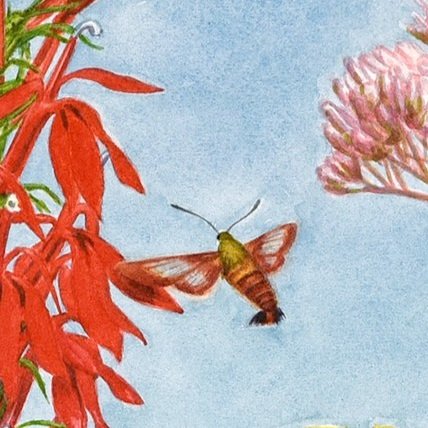
2. Hummingbird clearwing moth
Hemaris thysbe | A hummingbird look-alike, clearwings are active during the day and they feed on nectar sources like cardinal flower – not with a tongue and bill, of course, but with an insect proboscis.
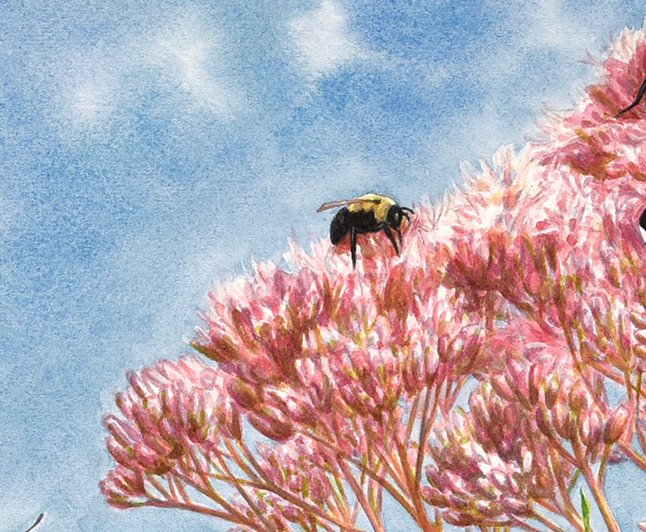
3. Bumble bee
Bombus sp. | While the United States is home to 46 species of bumble bees, and Eastern bumble bees (Bombus impatiens) are common sightings, four types of bumblebees are currently recognized as endangered or at risk by scientists. The good news: many citizens have mobilized to track and record data on these insects through Bumble Bee Watch and Beecology.
A simple way to support these species is to limit or stagger your mowing regimen. Keeping off from mowing in the summer months provides an opening for red clover and other vital nectar plants.

4. Eastern tiger swallowtail butterfly
Papilio glaucus | These majestic butterflies are nourished not only by drinking nectar but also from “puddling,” where a group of butterflies gather at a natural water source. They obtain essential nutrients like sodium ions and amino acids from these sips. Like the tiger swallowtail, we all need both food and water to survive!

Small Insects (5, 6, 9): Hover Flies and Green Sweat Bee
While hover flies mimic the coloration of bees and wasps, they have compound eyes and a single pair of wings — they aren’t deceiving us! They don’t carry as much pollen as a bee but they visit flowers more frequently. Note that there are several species of hover flies, including Allograpta obliqua and Eristalis transversa (shown).
Green sweat bees (Agapostemon sp.), meanwhile, have an iridescent appearance that’s all their own. They arrive in two generations each summer, a balancing act of mating, nest digging, hibernation, and feeding on nectar.
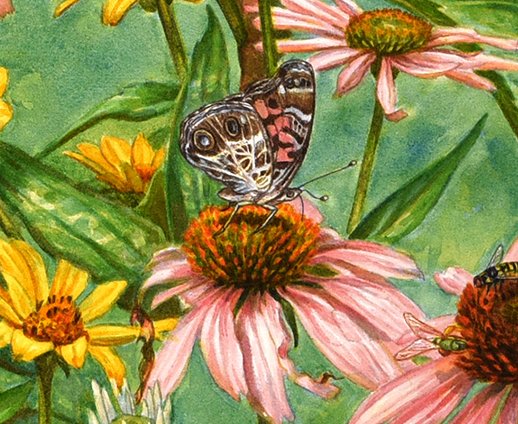
7. American lady butterfly
Vanessa virginiensis | While you’re likely to see an American Lady visiting flower nectar, you’ll only see the caterpillars feeding at night. The caterpillars weave together leaves from their host plant with silk to create a nest — their daytime hiding place.
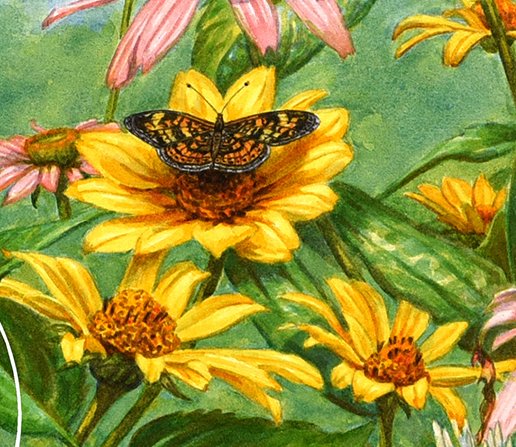
8. Pearl crescent butterfly
Phyciodes tharos | Like many butterflies, the pearl crescent’s chosen habitat is open areas. Aspetuck Land Trust’s preserves contain these larger pastures, fields, and meadows, but we’re redefining the way we steward unprotected land: the edge of your yard or your flower planting can be the stepping stone that connects the pearl crescent to larger open spaces.

10. Black swallowtail butterfly caterpillar
Papilio polyxenes | The larvae of the black swallowtail metamorphose (change their shape and appearance) several times, from scary-looking black and white to green with yellow and black markings. Its current form is sometimes confused with the Monarch caterpillar. Our advice? Always check the host plant – you won’t find Monarchs feeding on Golden Alexanders or other plants in the parsley family, just as you won’t find black swallowtail caterpillars eating milkweed.

11. Monarch butterfly
Danaus plexippus | Did you now that the Monarchs that we see in Connecticut migrate to central Mexico each year?I t’s a long journey. Our properties can not only provide the milkweed that Monarch caterpillars need at the beginning of the summer, but also the late-summer nectar to power the adult Monarchs in their migration between August and October.
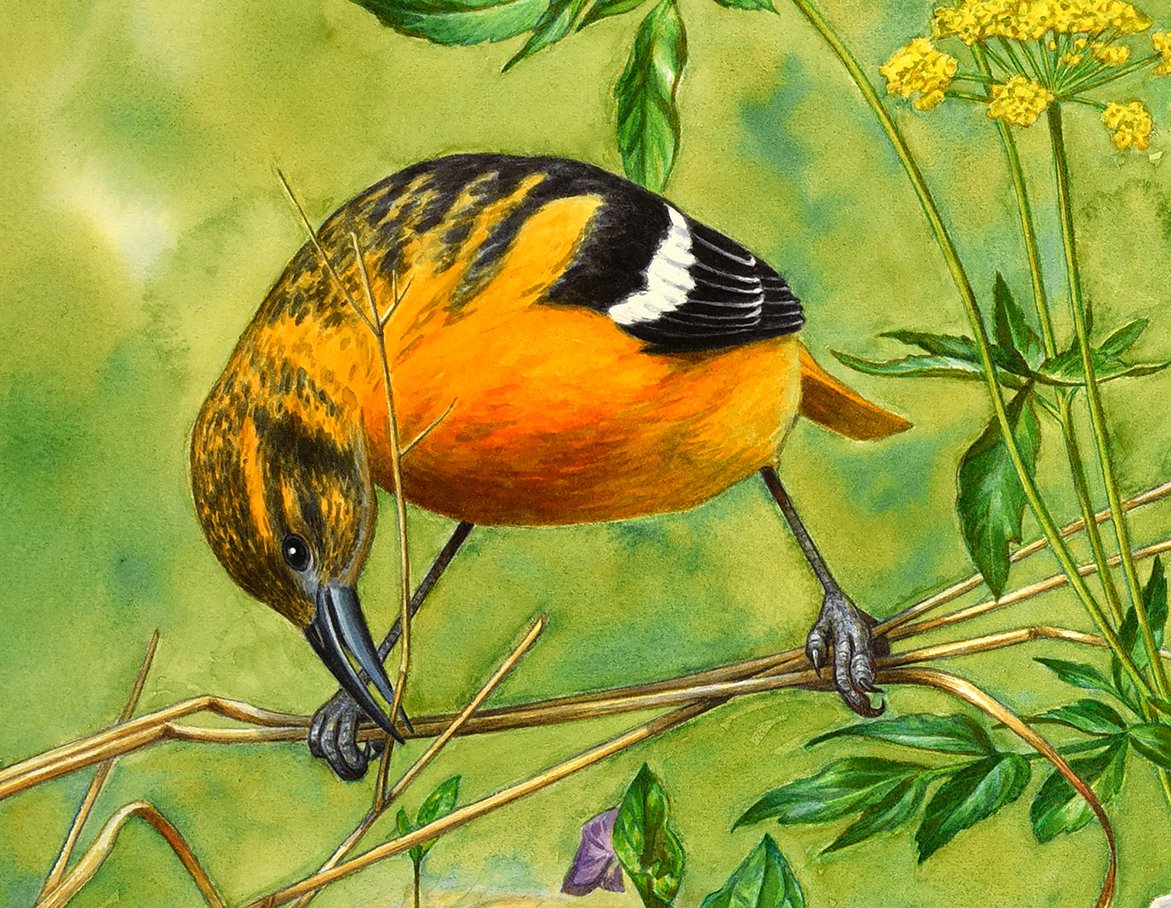
1. Baltimore oriole
Icterus galbula | The female oriole weaves a bag-shaped nest with materials including plant fibers, pieces of bark, hair, plant down, and mosses. She attaches this nest to the branch of a tall deciduous tree.
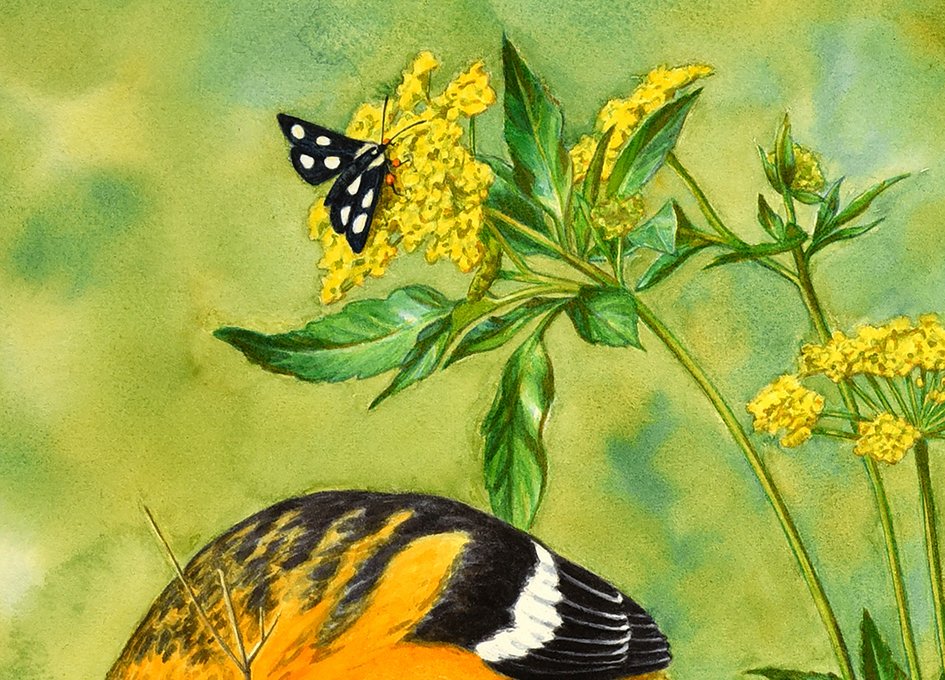
2. Eight-spotted forester moth
Alypia octomaculata | Found at the borders of wooded and open areas, the moth could easily be mistaken for a butterfly because it flies during the day and feeds on flower nectar. Open areas provide food, while wooded areas provide habitat.
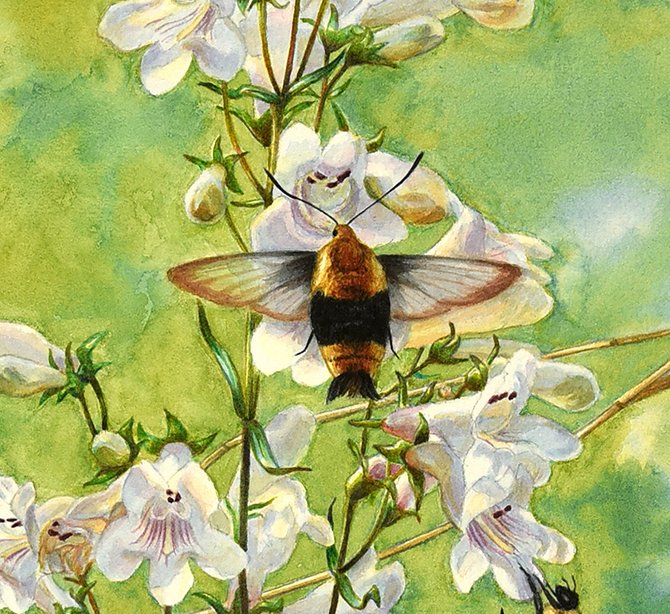
3. Snowberry clearwing moth
Hemaris diffinis | A bumble bee look-alike, Hemaris can hover in the air while searching for nectar. They emerge from cocoons in early spring, unrolling their long tongues to visit flowers like beardtongue and honeysuckle.
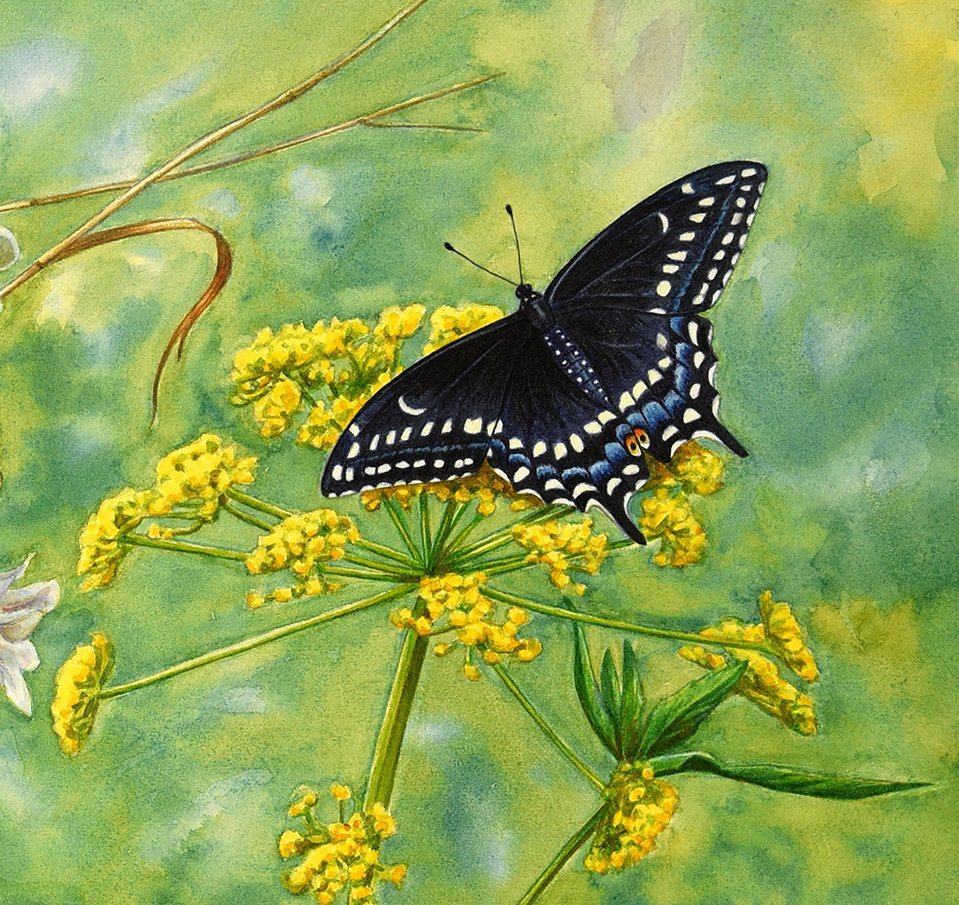
4. Black swallowtail butterfly
Papilio polyxenes | Swallowtail caterpillars feed on plants in the parsley family, including Golden Alexander— which poses as its poisonous cousin the wild parsnip to avoid deer browsing. The adult butterfly can visit Zizia, among other plants, for nectar.
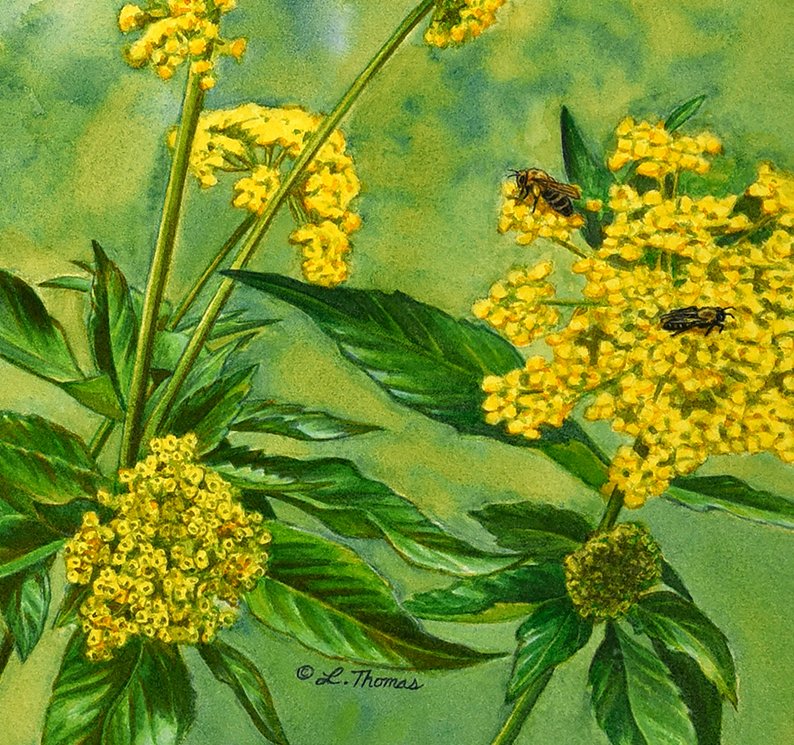
5. Mining bee
Adrena sp. | Mining bees are picky eaters, visiting only certain species to collect pollen for their developing larvae. Dr. Doug Tallamy encourages us to plant the natives like Zizia aurea that meet the requirements of these insect “specialists.”
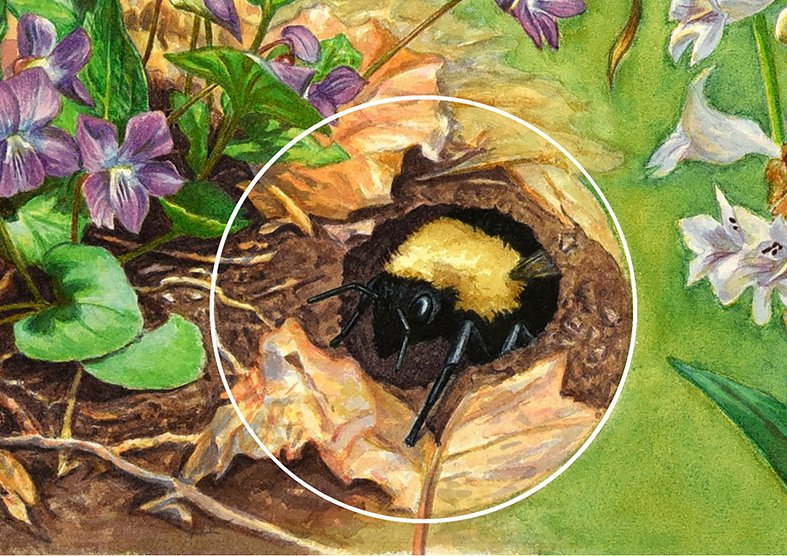
6. Bumble bees including queen
Bombus sp. | A mated queen bee burrows an inch or two into the earth at the end of summer, sheltering in leaf litter. In the spring, she emerges from hibernation and seeks pollen and nectar to support the colony’s growth. Does this inspire you to “leave the leaves” in your yard this fall? Supporting species is a year-round affair.
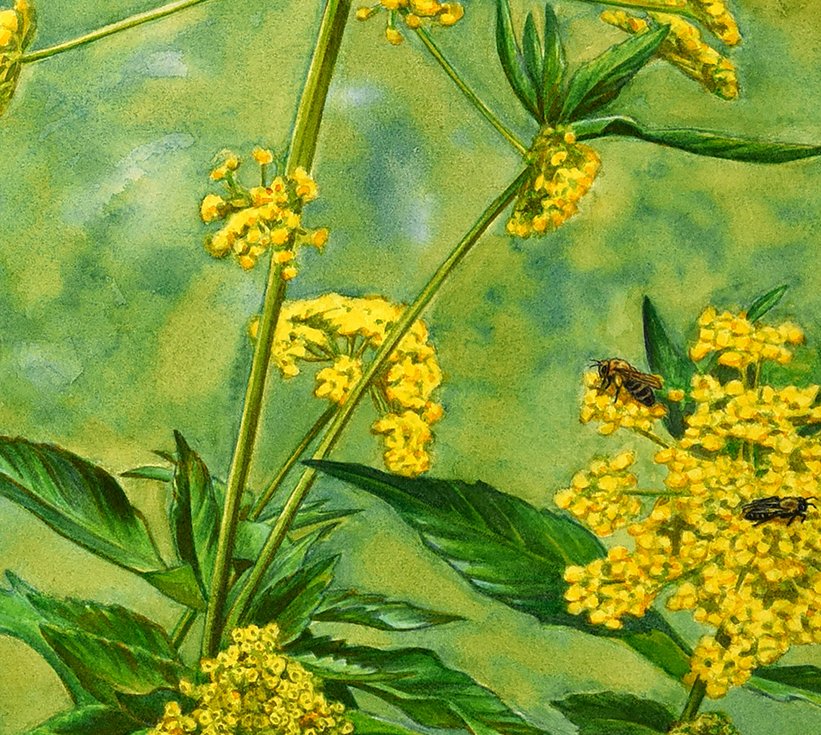
7. Golden Alexander
Zizia aurea | This is a plant that supports many kind of pollinators: small beneficial wasps, flies, native bees, and of course the black swallowtail butterfly. Andrena ziziae is just one native bee species that visits in early spring when other nectar sources can be scarce.
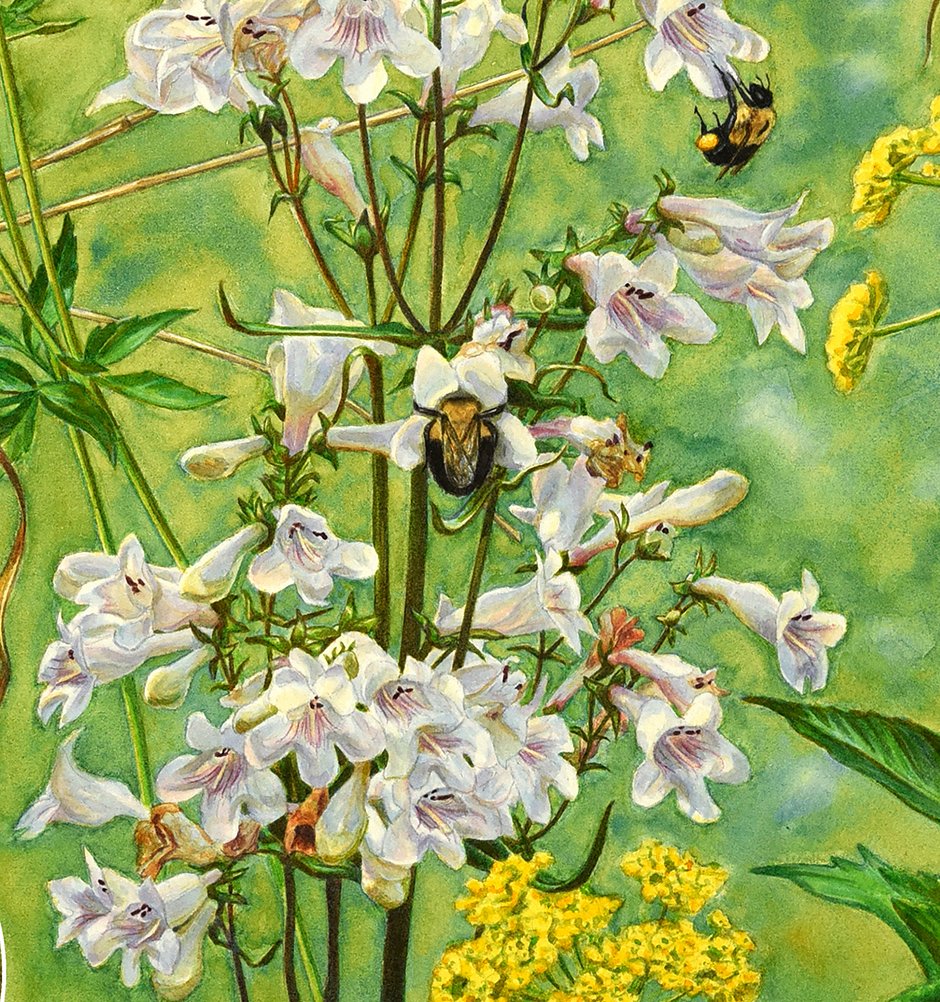
8. Foxglove beardtongue
Penstemon digitalis | The flower reminds us of a “beard” because of the hairs that push visiting bees deeper into the “tongue” of the flower. Also notice the pink lines to guide pollinators.

9. Purple Coneflower Leaves
Echinacea purpurea | Purple coneflower doubles as a host plant for the silvery checkerspot butterfly and a source of seeds for birds like the Baltimore oriole. We often forget there are so many important roles of plants besides nectar.
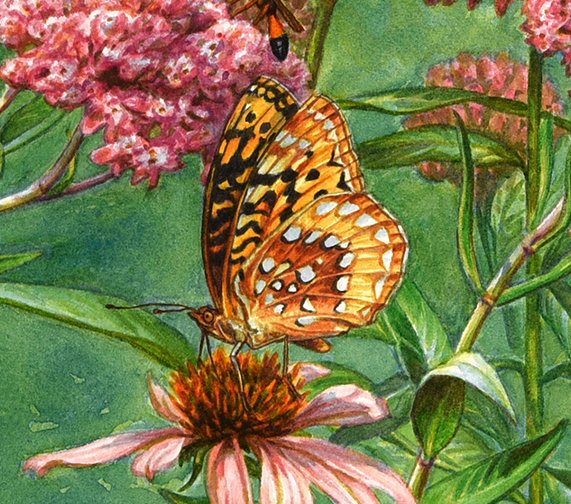
12. Great spangled fritillary butterfly
Speyeria cybele | After an adult female butterfly lays eggs in late summer, caterpillars hatch — and then don’t feed until spring. But the adult butterflies will feed on nectar all summer!
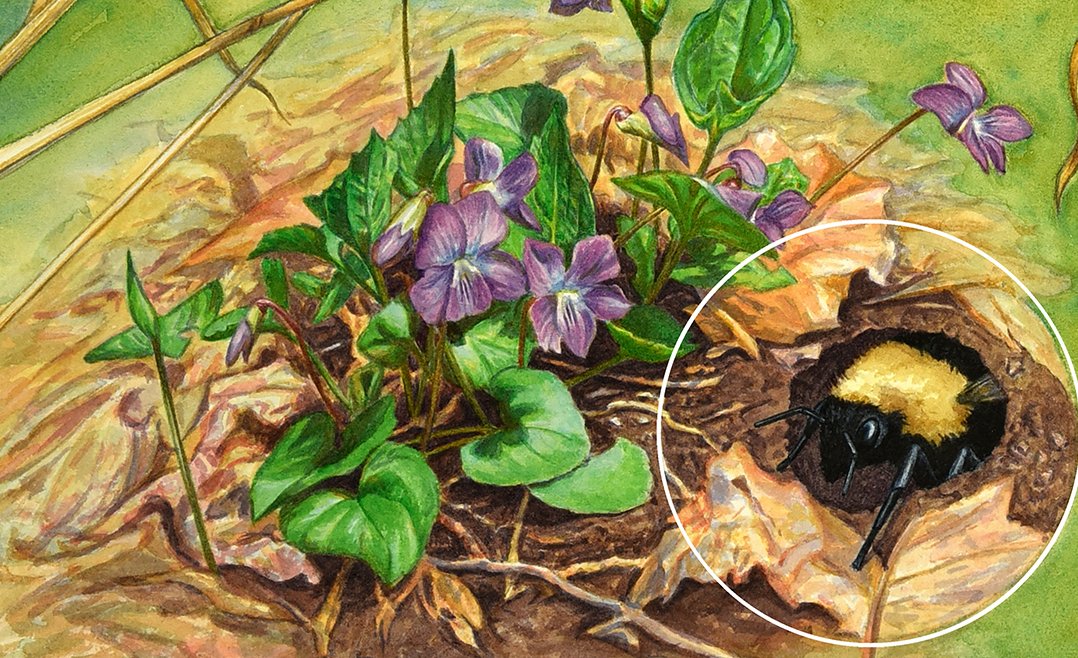
10. Common blue violet
Viola sororia | Violets thrive in early spring, under moist conditions. But don’t overlook these small plants as just groundcover or even mislabelled weeds: they support a specialist mining bee, Adrena violae.
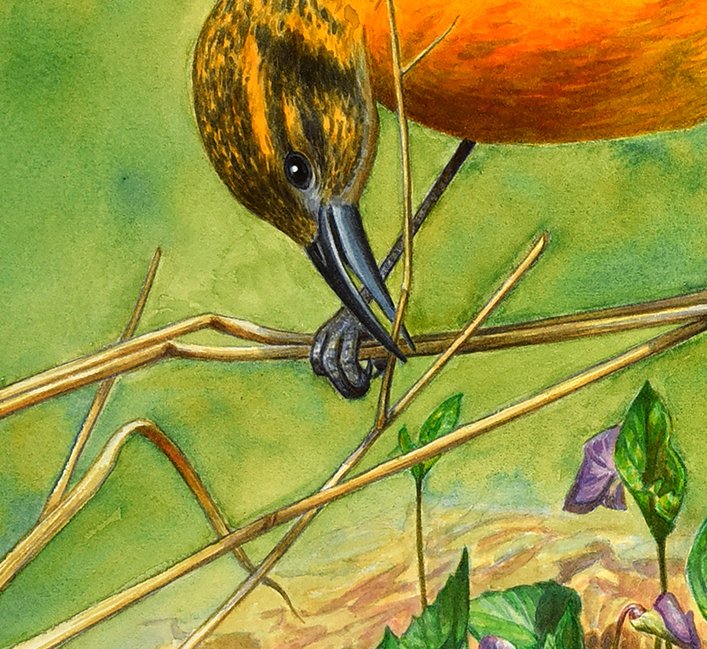
11. Switchgrass
Panicum virgatum | A key species in the tallgrass prairie, switchgrass can be used to create “pocket prairies,” form clumps of sod, or even re-seed meadows here in Connecticut. It provides nesting material for birds and is deer resistant.
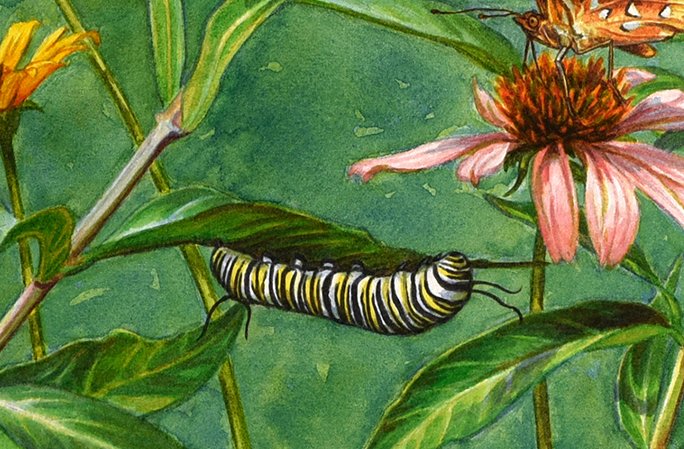
13. Monarch butterfly caterpillar
Danaus plexippus | One of our most beloved butterflies, the Monarch has declined in population, and was listed as “endangered” in July 2022. However, so many government agencies, nonprofits, and citizens have banded together to expand food and nectar sources (across roadsides, urban gardens, butterfly gardens, and preserves) and hopefully ensure their long-term survival.
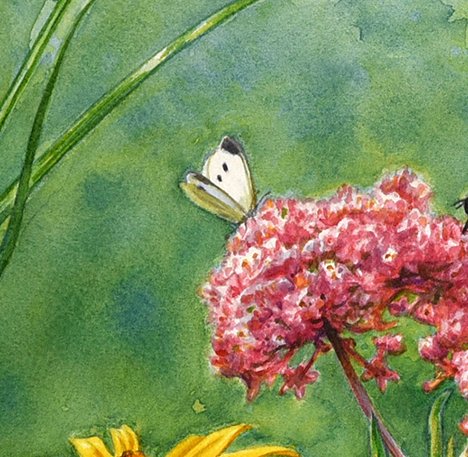
14. Cabbage white butterfly (female)
Pieris rapae | A textbook non-native species, the cabbage white butterfly was introduced to North America from Eurasia in 1860 and has been the bane of cabbage farmers ever since. Its caterpillars eat vegetables like cabbage, broccoli, kale, and cauliflower. But a pest management strategy that uses biological controls like the butterfly’s natural enemies and avoids pesticides, has been successful.
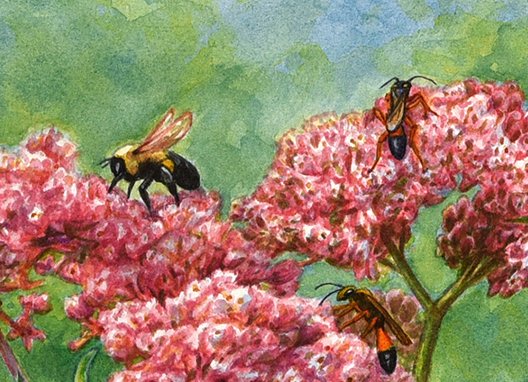
15. Great golden digger wasp
Sphex ichneumoneus | Fear not, these wasps are nonaggressive and burrow into the ground to form their nests. In fact, they perform many beneficial services: eating grasshoppers, aerating the soil as they burrow, and pollinating flowers.
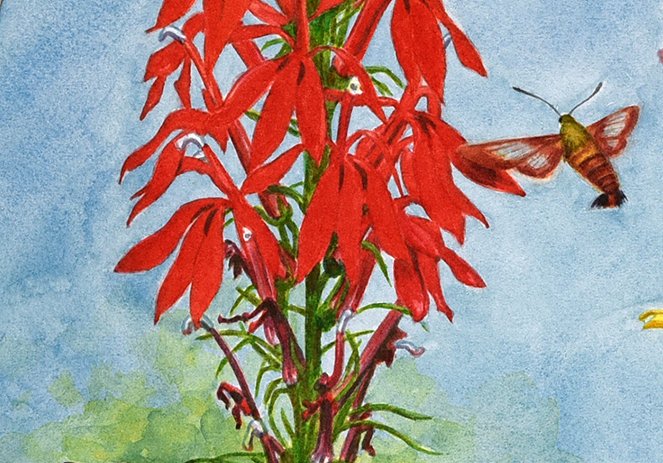
16. Cardinal flower
Lobelia cardinalis | The cardinal flower is an example of coevolution, as a flower and pollinator formed a relationship over time that benefitted them both: hummingbirds and clearwing moths are able to access the long, slender red tubules for nectar, and in turn, the cardinal flower is pollinated!
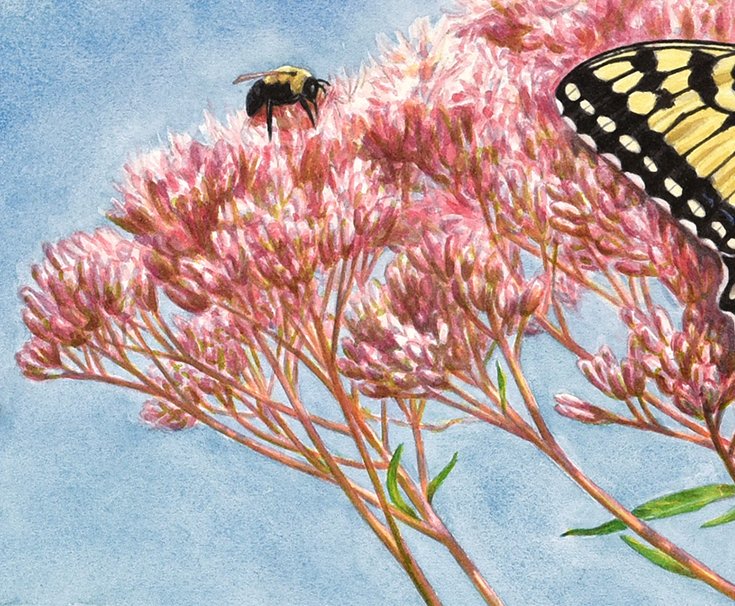
17. Spotted Joe Pye weed
Eutrochium maculatum | Named for the visible spots on the stem, spotted Joe Pye weed offers high-value nectar and pollen for bumble bees and the Monarch butterfly in late season.
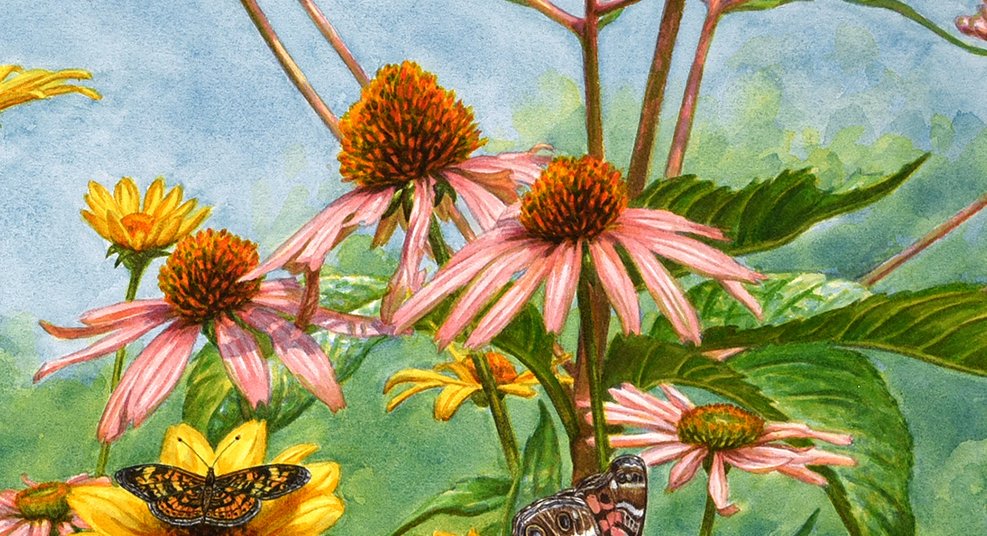
18. Purple coneflower
Echinacea purpurea | While we’ve mentioned many plants that prefer wet and swampy soil, Echinacea is the choice for sunny and dry areas. It blooms for long stretches in meadows, prairies, and garden borders.

19. False sunflower
Heliopsis helianthoides | A sunflower-like plant, Heliopsis is long-blooming from June to September. It’s also easy to plant from seed.

20. Golden Alexander
Zizia aurea | Zizia is a host plant for the black swallowtail. In addition to spotting a caterpillar on its leaves, you might notice that it has interestingly textured leaves divided into groups of 3’s.
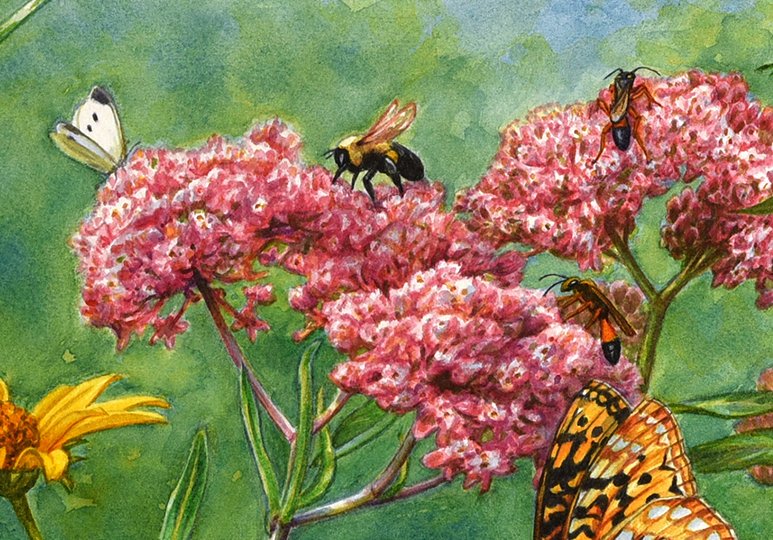
21. Swamp milkweed
Asclepias incarnata | Swamp milkweed is perfect for creating Monarch habitat in wet or swampy areas. As Monarch caterpillars eat milkweed leaves, they ingest the plant’s cardiac glycosides, which they can tolerate but their predators cannot. Perhaps that’s why swamp milkweed is highly deer resistant!
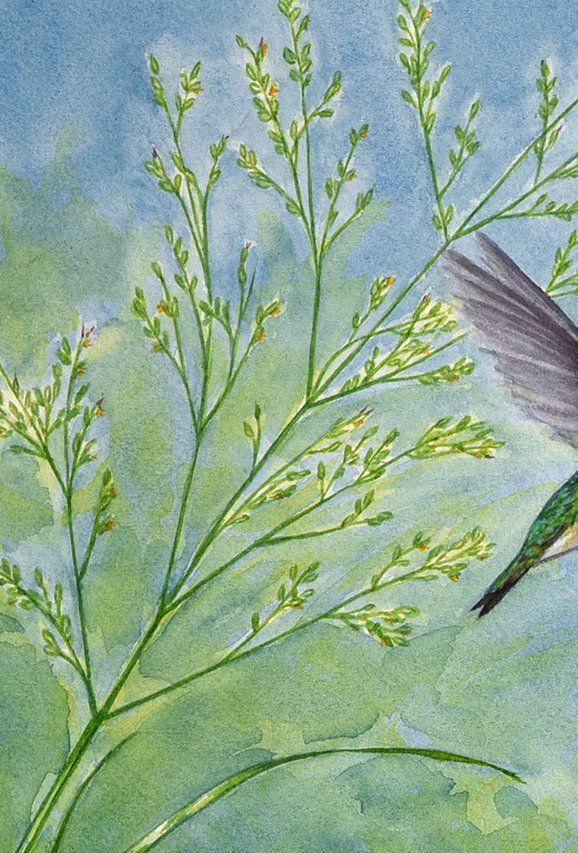
22. Switchgrass
Panicum virgatum | Switchgrass changes through the seasons from light green leaves, to green leaves with reddish green seed heads, to bright yellow leaves in the fall. It models the principle of gardening with nature: working with switchgrass’ natural features to accent color and texture in your garden!





































